Introduction
Case Report
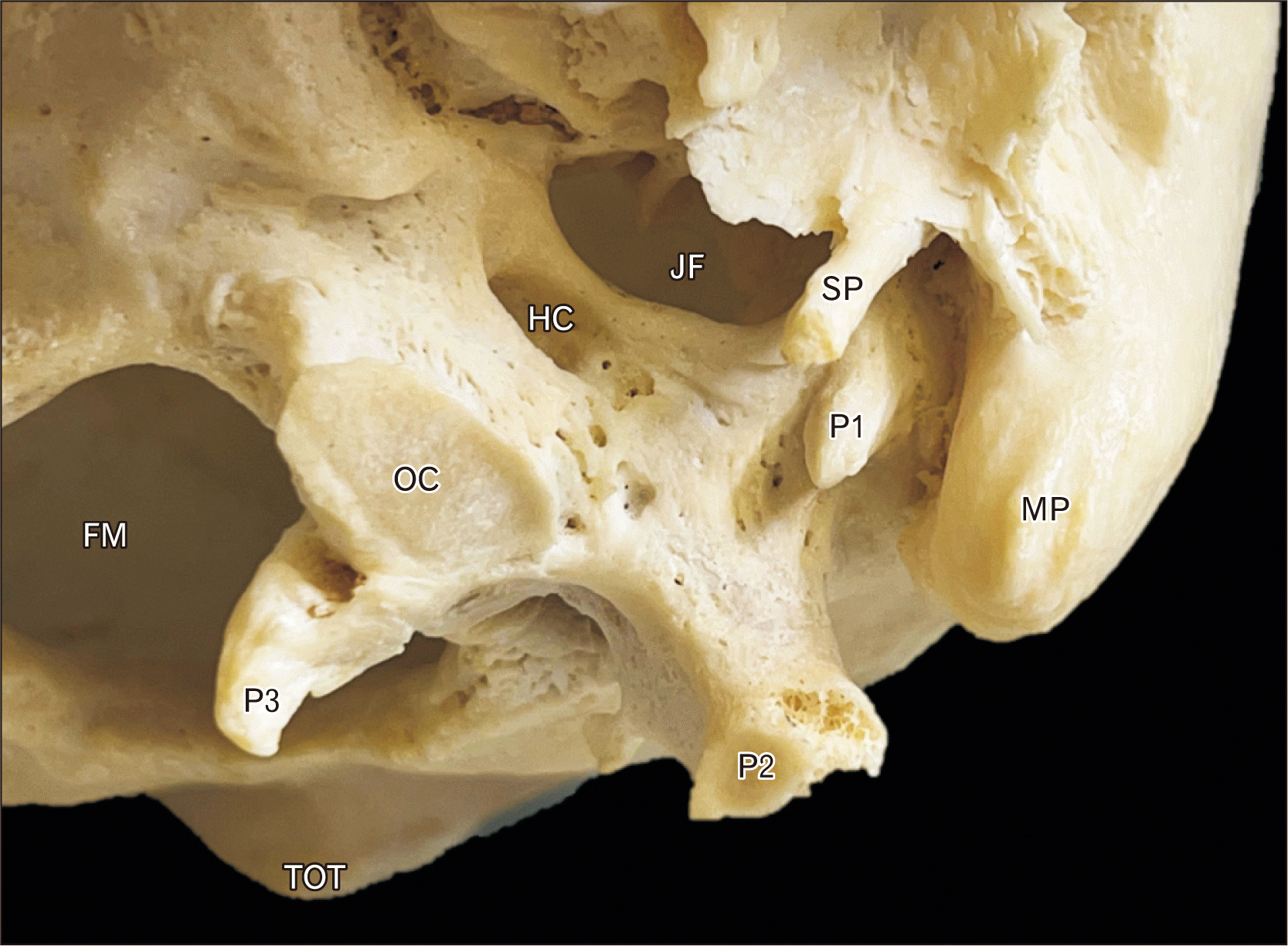 | Fig. 1Inferior view of the left sided skull base in the specimen described herein. Note the three odd bony protuberances: P1, medial to the mastoid process (MP); P2, the more typical ‘paracondylar process’; and P3, extending inferomedial to the occipital condyle. Also note the torus occipitalis transversus (TOT), foramen magnum (FM), occipital condyle (OC), hypoglossal canal (HC), jugular foramen (JF), and styloid process (SP). |
 | Fig. 2Posterior view of the skull base. Note the three odd bony protuberances: P1, medial to the mastoid process (MP); P2, the more typical ‘paracondylar process’; and P3, extending inferomedial to the occipital condyle (OC). *Additional bony excrescence. |
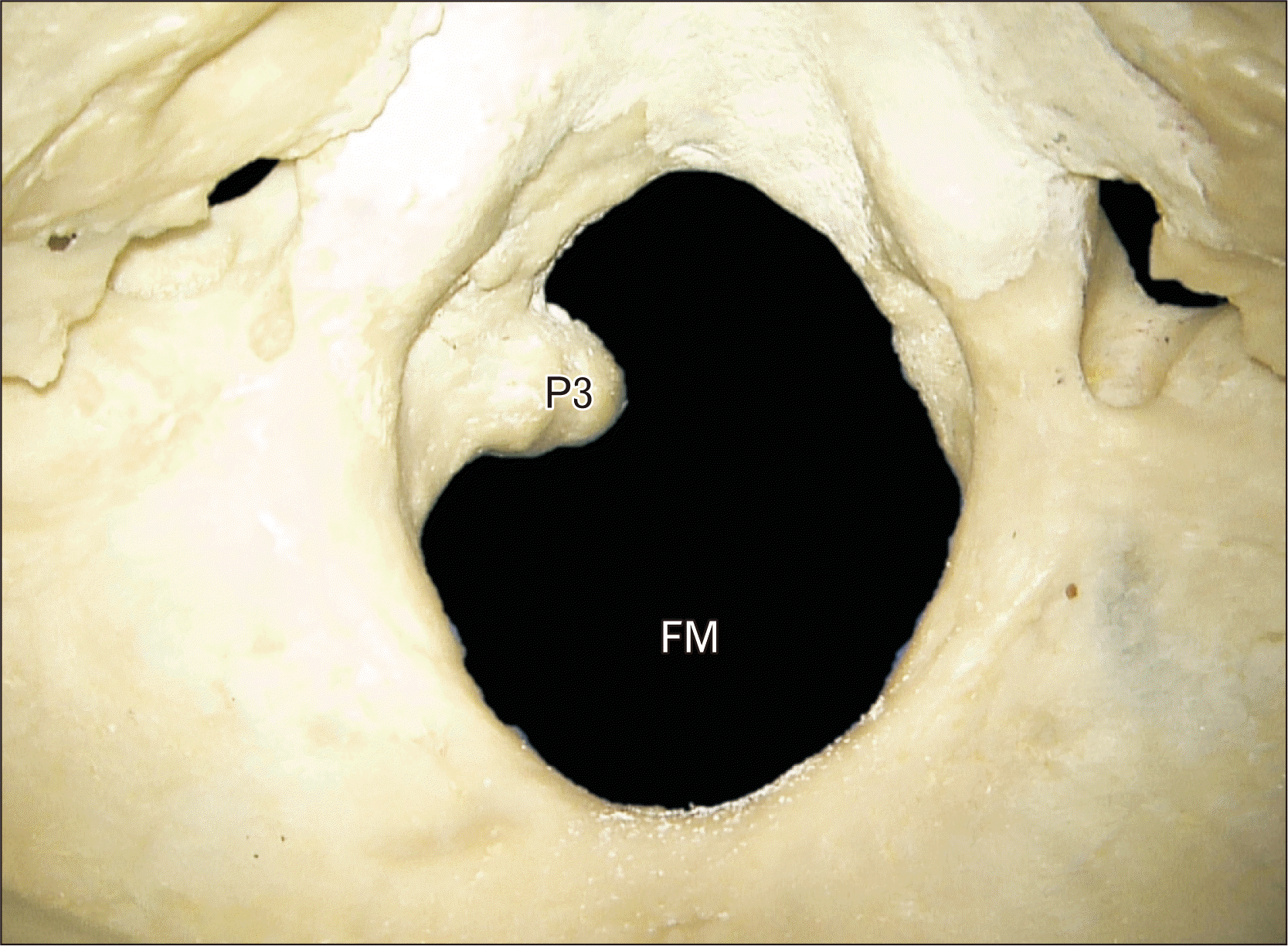 | Fig. 3Internal view through the foramen magnum (FM) noting the medial extension (P3) from the left occipital condyle. |
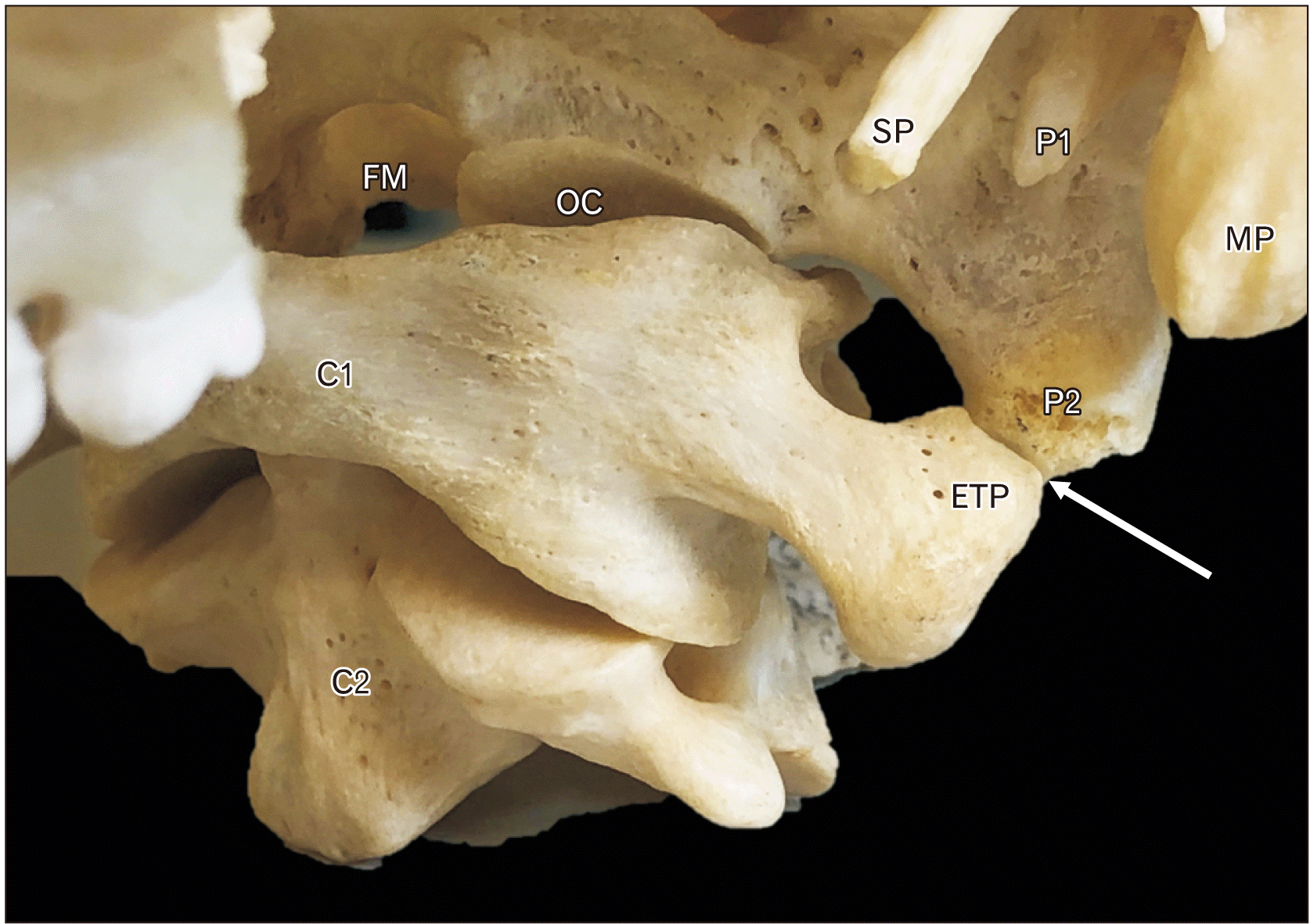 | Fig. 4Articulation between the upper two cervical vertebrae (C1 and C2) and the skull reported here. Note the epitympanic process (ETP) of the left transverse process of the atlas (C1) articulating with the paracondylar process (P2) of the skull (arrow). The abnormal bony process (P1) medial to the mastoid process (MP) is also seen. For reference, note the styloid process (SP), occipital condyle (OC), and foramen magnum (FM). |
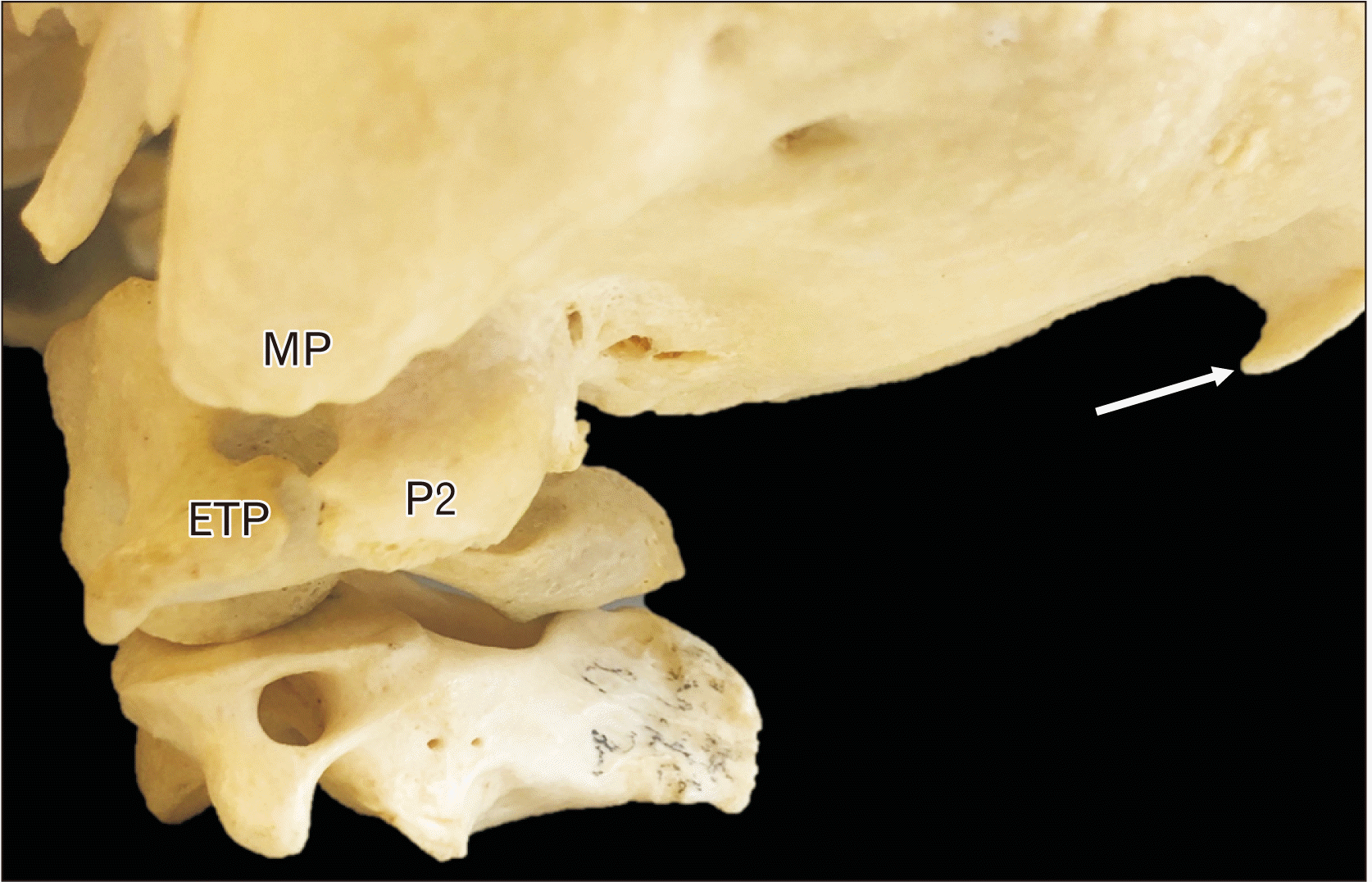 | Fig. 5Lateral view. Note the joint formed between the epitympanic process of C1 (ETP) and the paracondylar process (P2) of the occipital bone. Note the mastoid process (MP) and torus occipitalis transversus (arrow). |
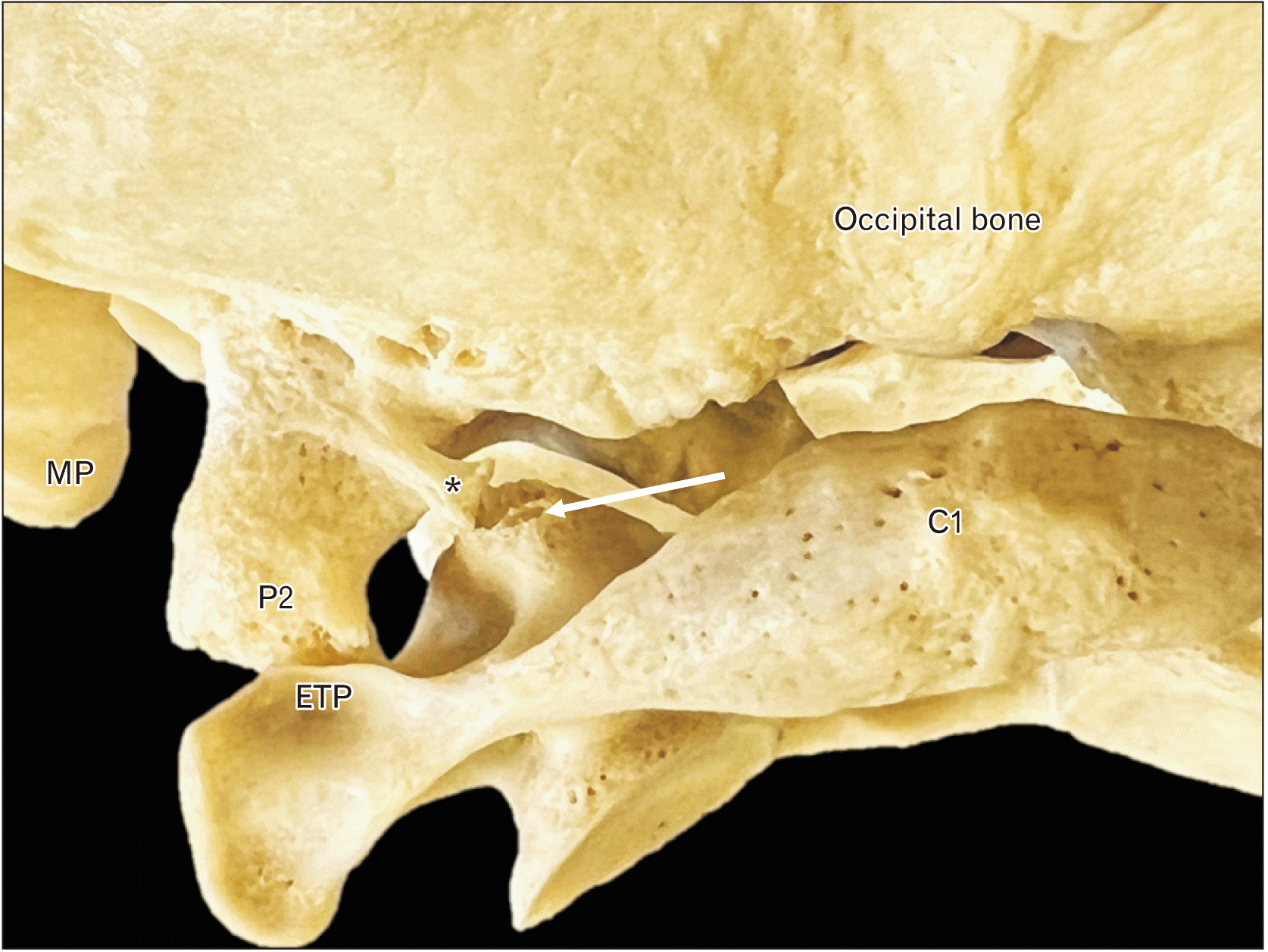 | Fig. 6Posterior view of the skull noting the two points of articulation between the paracondylar process (P2). The more lateral articulation is between the paramastoid process and epitympanic process (ETP) of C1. The more medial articulation (arrow) is between a process (*) from the P2 and the superior articular process of C1 (arrow). MP, mastoid process. |




 PDF
PDF Citation
Citation Print
Print



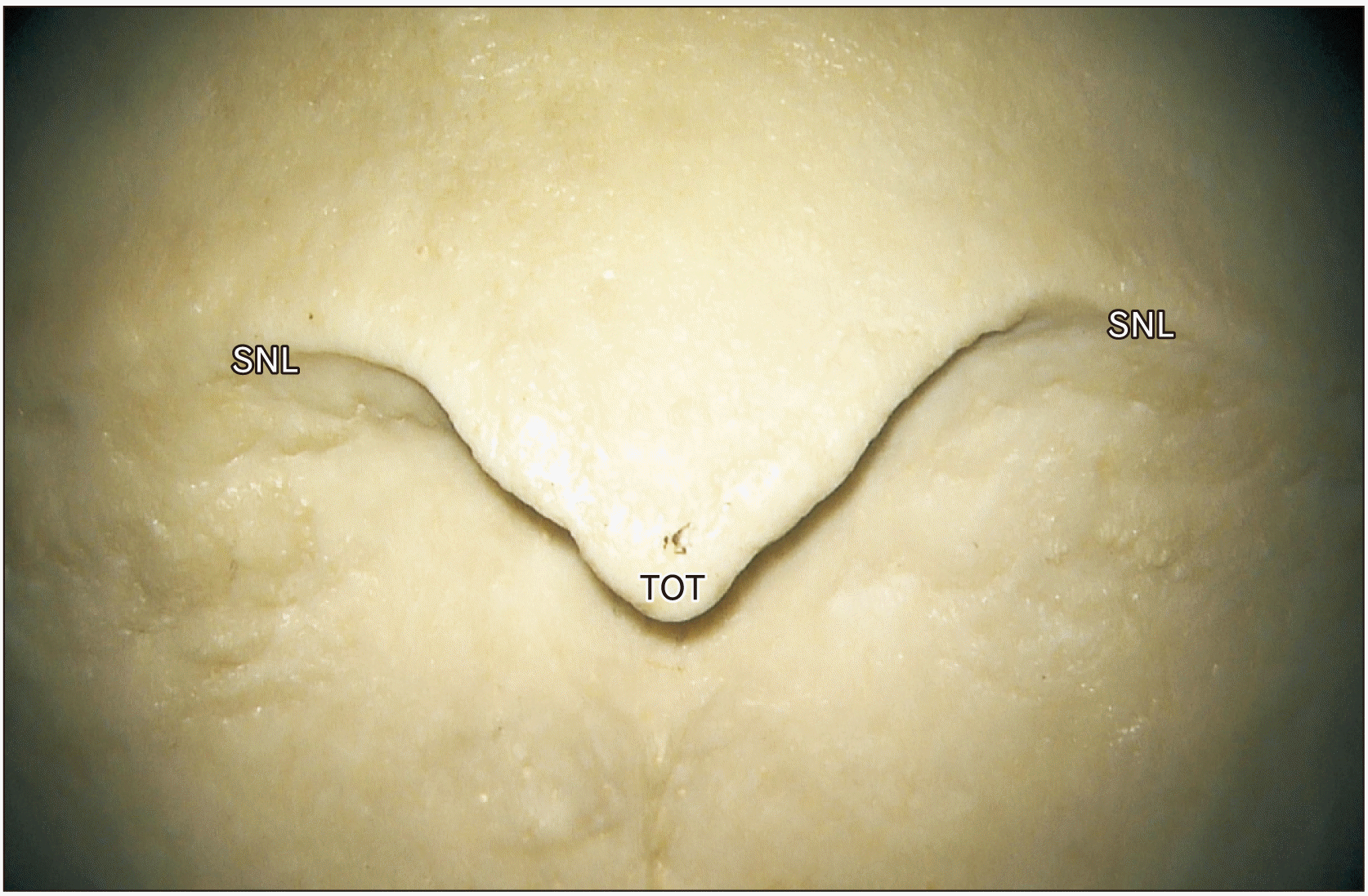
 XML Download
XML Download